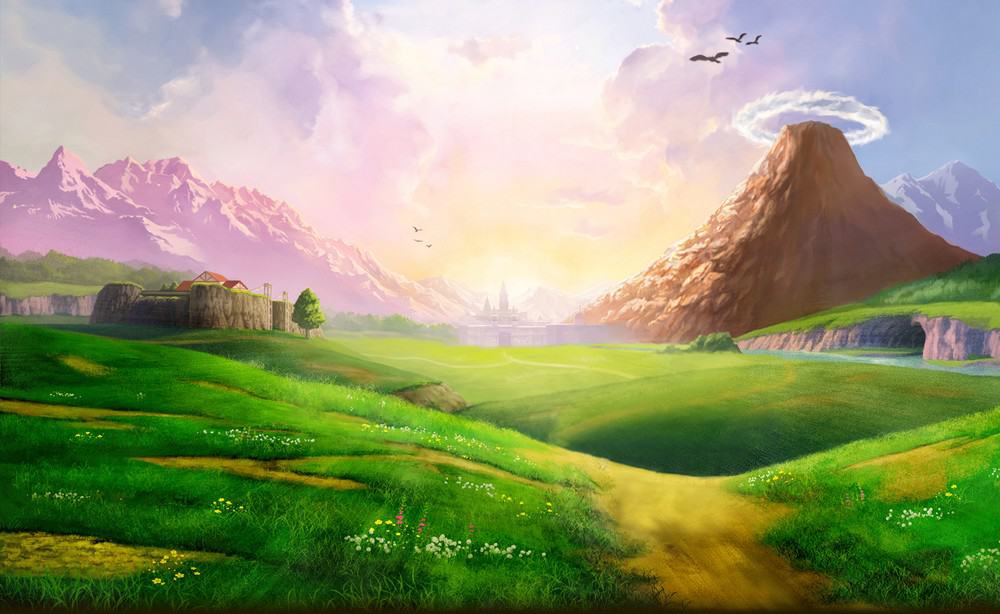With the reveal in Skyward Sword regarding how all games in the series are connected, it makes sense that The Legend of Zelda games would feature different versions of the setting of Hyrule in each of their new iterations. Outside games that are direct sequels to one another, the Hyrule maps change just as often as the series’ protagonists and antagonist do, shifting to a new version of the kingdom in every game. These changes are more than just in appearance too, with each new map of Hyrule featuring its own spin on the classic layout that The Legend of Zelda introduces.
Taking a look at each of the maps in the series, certain trends start to make themsevles evident. For starters, each version of Hyrule includes both Death Mountain and a version of the Lost Woods. Later games include towns and settlements, including iconic locations such as Hyrule Castle and Kakariko Village, but the location and placement of these areas on the map almost always shifts from entry to entry. In the case of Wind Waker, the game doesn’t even feature a genuine map at all! Part of the fun of playing Zelda is seeing how the games’ talented developers craft a new version of one of gaming’s most recognizable settings, and below are each of the Hyrule maps across more than 35 years of The Legend of Zelda.
The Legend of Zelda (1986)
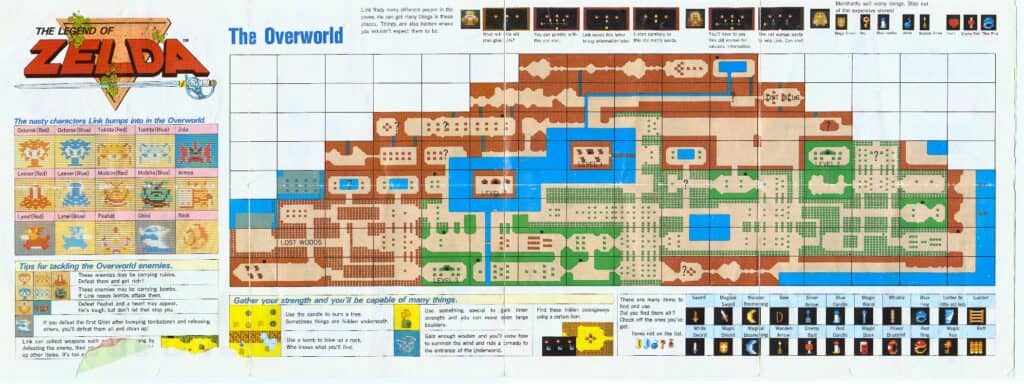
The original Legend of Zelda features a minimalistic version of Hyrule that mostly focuses on Link’s adventure in the countryside. There are no castles or towns to visit, with the world map instead being the maze that links together each of the game’s mysterious dungeons. The map is absolutely packed with secrets, and it’s just the right size for players to easily memorize where everything is after just a few playthroughs. Simply put, the map of the original Legend of Zelda is one of the most important game settings of all-time.
Zelda II: The Adventure of Link (1987)
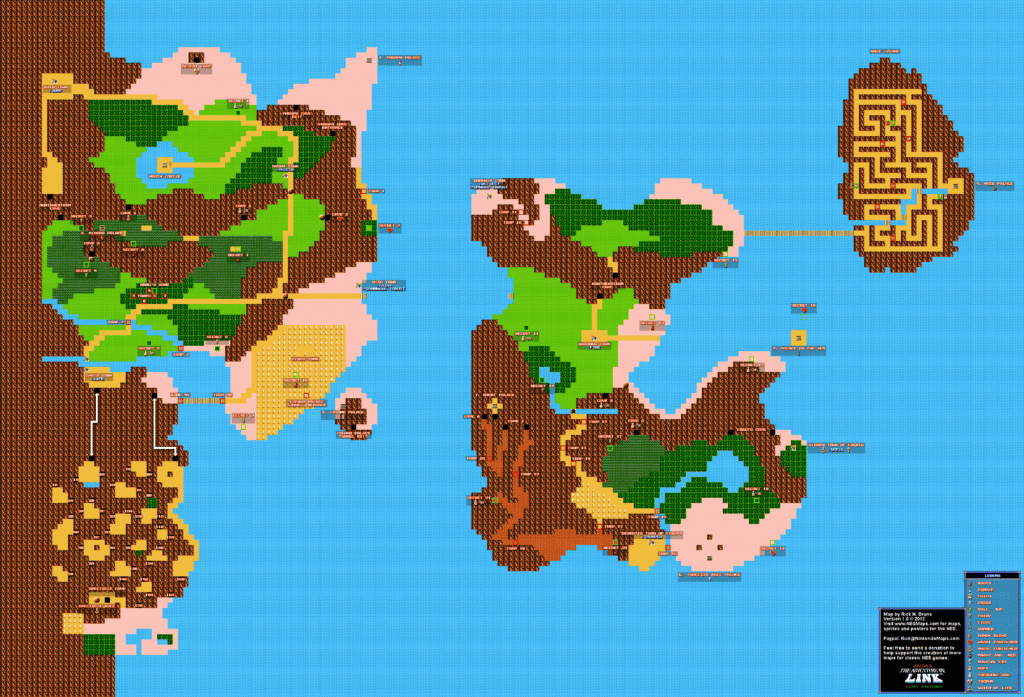
In an effort to up the ante over the first game, Zelda II features a map of Hyrule that greatly expands over the first game’s. In addition to the countryside and dungeon areas there are now towns, temples, and palaces for Link to visit. Additionally, the overworld map features random encounters akin to contemporaries like Final Fantasy or Dragon Quest, making Zelda II the most RPG-like of the early Zelda games. Rather than connect the game’s two large landmasses with tunnels or caves, a large body of water separates upper and lower Hyrule, making Zelda II one of the only games in the series to feature a sea.
The Legend of Zelda: A Link to the Past (1991)
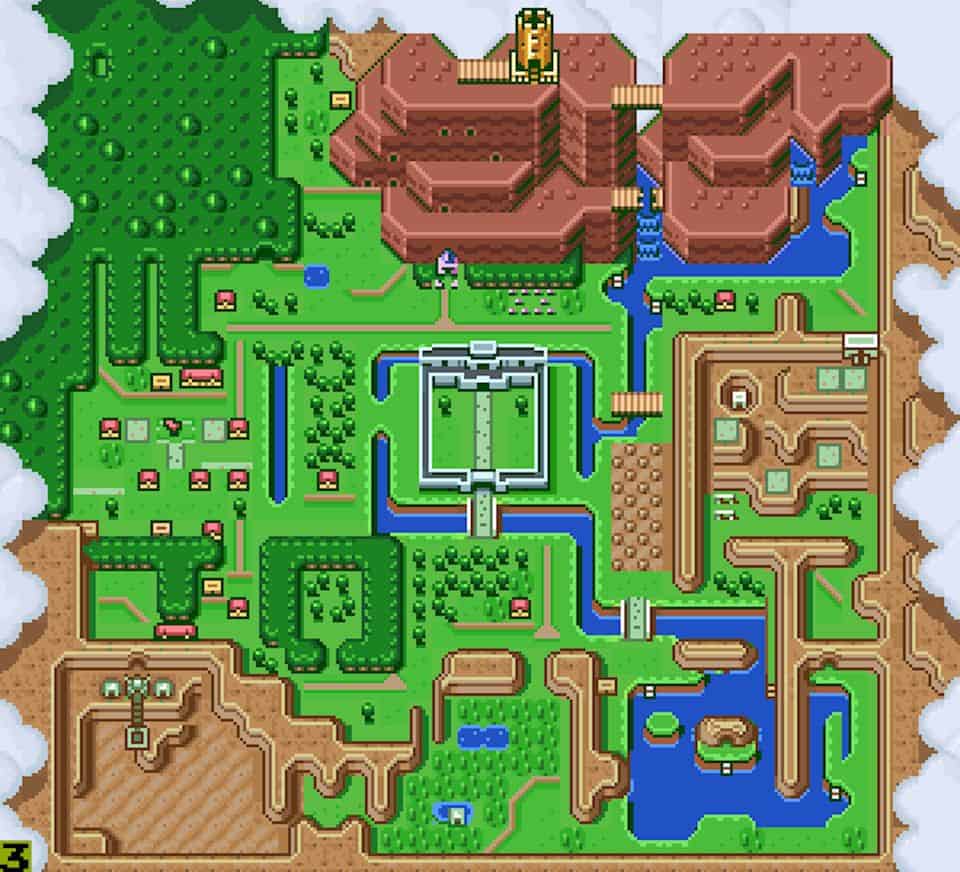
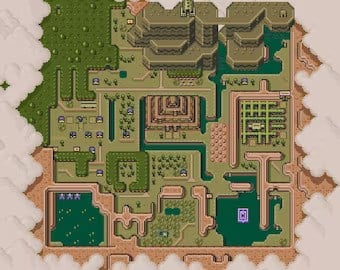
After the many departures of Zelda II, A Link to the Past returns the series to its roots for its first 16-bit outing, with the most notable returning tradition being the overhead perspective and contained map. That said, A Link to the Past shakes things up midway through the game by introducing the Dark World (the former Sacred Realm) and requiring players to traverse back and forth between the Light and Dark Worlds to solve puzzles, acquire treasures, and enter dungeons. So iconic is the dual map of A Link to the Past that it received its own spiritual successor in A Link Between Worlds as well as serving as the template for the maps of several other Zelda games not taking place in Hyrule.
The Legend of Zelda: Ocarina of Time (1998)
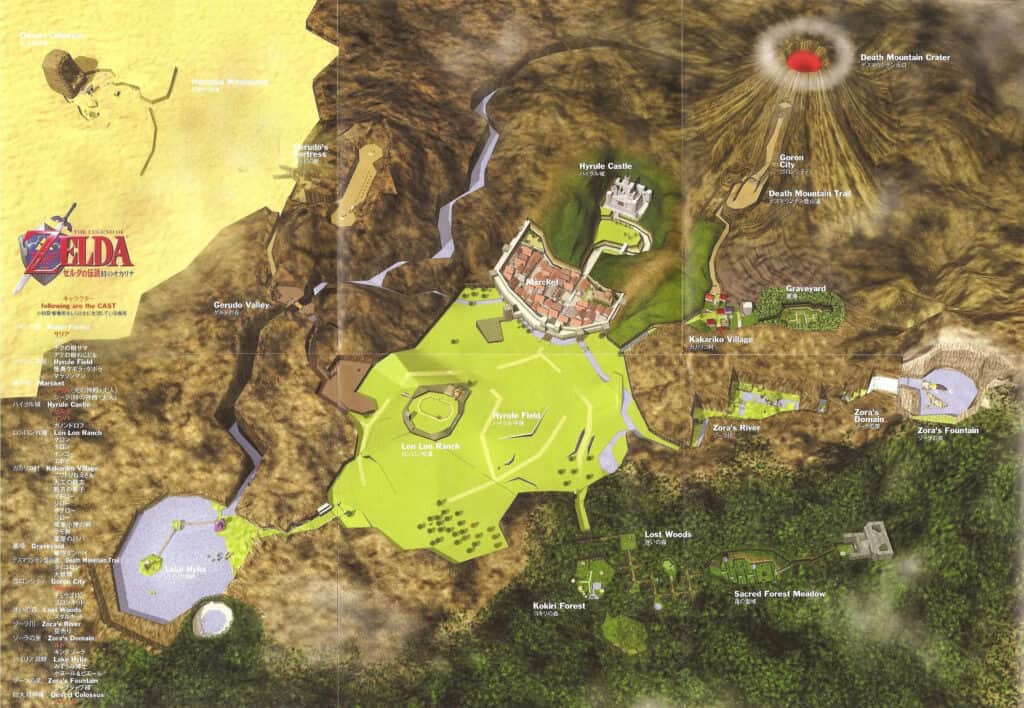
Partially due to the limitations of the technology at the time, the map for Ocarina of Time seems somewhat smaller and less varied compared to previous games in the series, but its place as the first 3D map in the series makes it one of the most important in the entire franchise and in video games as a whole. This was the first time players had seen Hyrule rendered in 3D, and the fact that the team absolutely nails the feeling of the setting in a smaller, but more densely packed, map is nothing short of amazing. Few games can replicate the feeling of astonishment that players felt in 1998 upon venturing out to Hyrule Field for the first time.
The Legend of Zelda: The Wind Waker (2002)
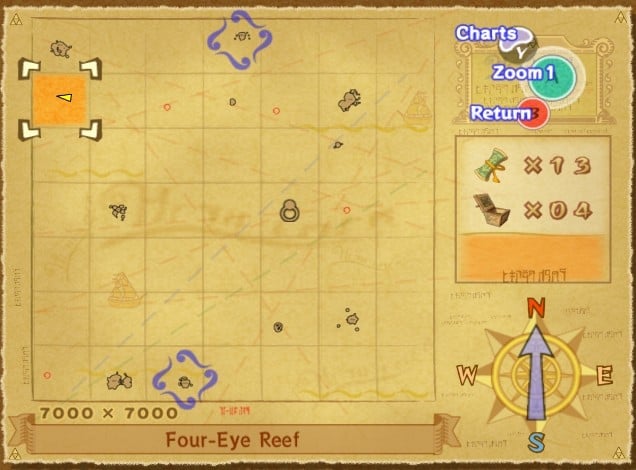
Because the actual realm of Hyrule is sumberged beneath the Great Sea in Wind Waker, the game doesn’t actually feature a traditional map. Instead, players have access to the Sea Chart that Link must use to locate islands and search for treasure. This chart is a mimic of an actual navigators chart that one would use while sailing, but it is light on detail until players begin to fill it in with their own discoveries. Still, that hasn’t stopped fans from creating their own versions of the Wind Waker Great Sea in various media, including physical representations of the game’s world and beautiful paintings imagining what an actual map might look like.
The Legend of Zelda: Four Swords/Four Swords Adventures (2002, 2004)
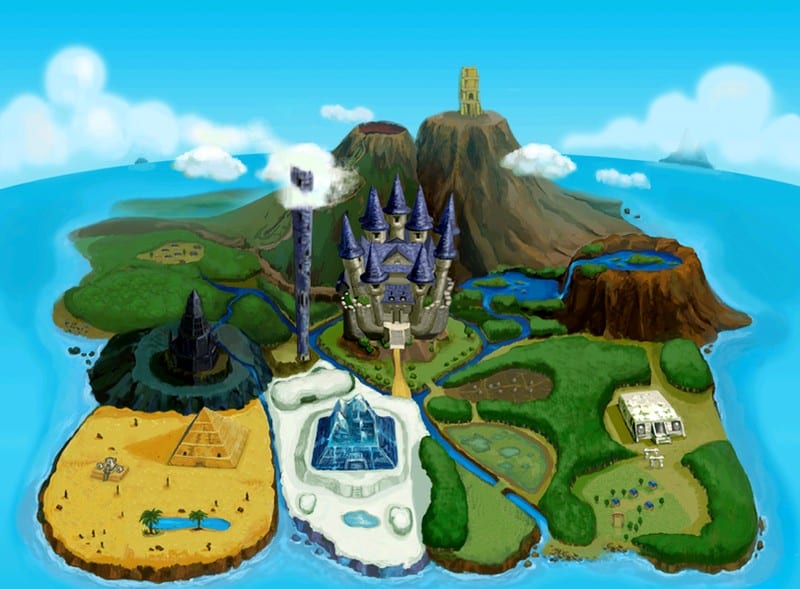
Even though both Four Swords and Four Swords adventures feature similar graphic assets to A Link to the Past, the games are split up into stages rather than the traditional open map for exploration. As a result, the only map that exists for these games is the one that the manual includes. This version of Hyrule is also very similar to that of A Link to the Past, with Hyrule Castle sitting at the center and Death Mountain residing at the very northern reaches of the continent. Also of note is that the desert area sits southwest of Hyrule Castle just like it does in A Link to the Past‘s version of Hyrule.
The Legend of Zelda: The Minish Cap (2004)
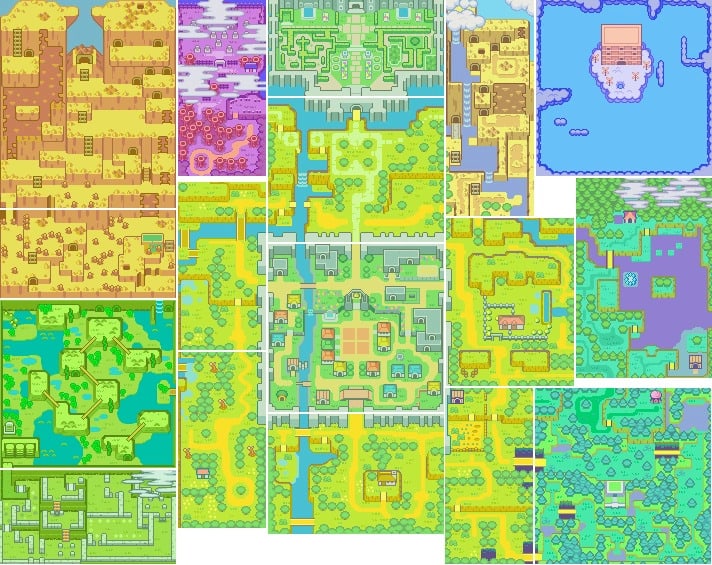
In addition to being one of the most unique Zelda games, The Minish Cap also features one of the most unique Hyrule maps in the series. Rather than feature Hyrule Castle at the center, the village area sits in the middle of the map. Further, the forest and desert areas swap places to feature in the southwest and northwest, respectively. Death Mountain is also largely absent, instead replaced with a sky area where the Picori (the titular Minish) reside. Between is excellent combat and puzzles, great dungeons, and unique map, it’s a shame more haven’t played this Game Boy Advance classic.
The Legend of Zelda: Twilight Princess (2006)
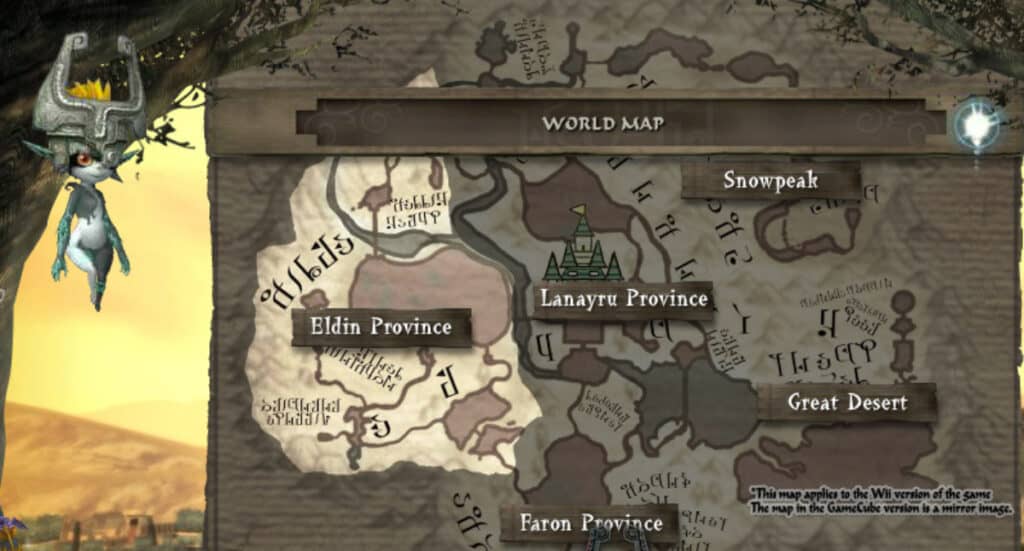
Wind Waker was a substantial departure from what most fans expected following Ocarina of Time, so it makes perfect sense that Twilight Princess features a map that is largely reminiscent of the first 3D game in the series. Again, Hyrule Castle sits at the center with a secluded forest village at the southern reaches of the map. Just like in Ocarina of Time, the Faron woods (the secluded forest area) is where the hero of legend Link resides. Unlike Ocarina of Time‘s map, though, Twilight Princess features a massive volcano in its western province as well as a counterpart to the world of light known as the Twilight Realm. This is a mirror of the Hyrule map where certain areas are inaccessible or outright missing.
The Legend of Zelda: Skyward Sword (2011)
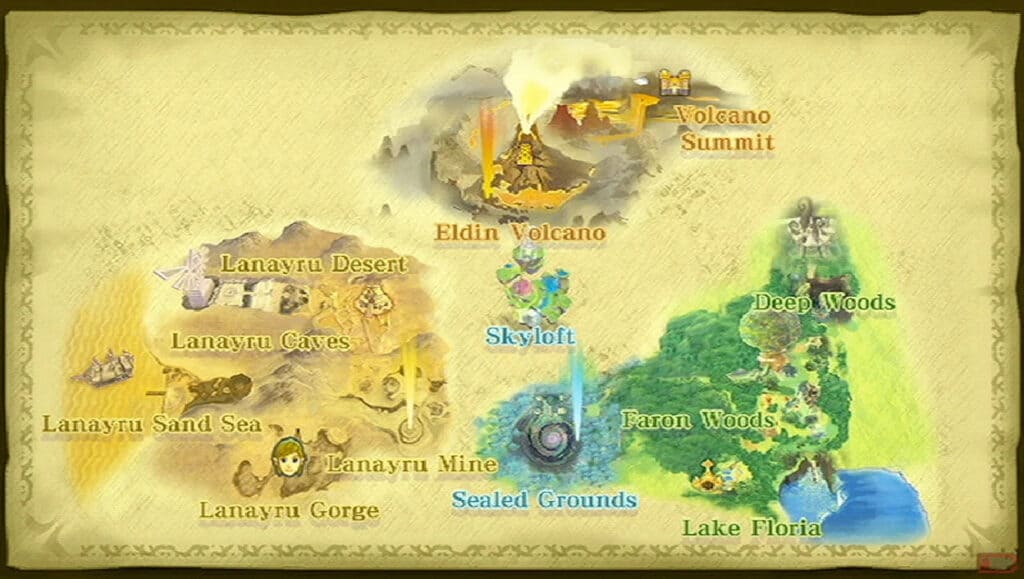
Considering that Skyward Sword takes place in the earliest version of the series’ kingdom of Hyrule, the game does an excellent job including the biomes most would expect while adding in some new areas. Skyward Sword features the first 3D imagining of a skybound realm where both Link and Zelda originate, and when both fall to the surface world of Hyrule it holds plenty of geographic diversity for the hero to explore. There’s forests, deserts, and even another massive volcanic area, along with a novel timeshift mechanic that allows Link to jump into the past and see what the world was like thousands of years prior. Beyond its variance in locations, this primordial version of Hyrule features a beautiful art style bright color palette.
The Legend of Zelda: A Link Between Worlds (2013)
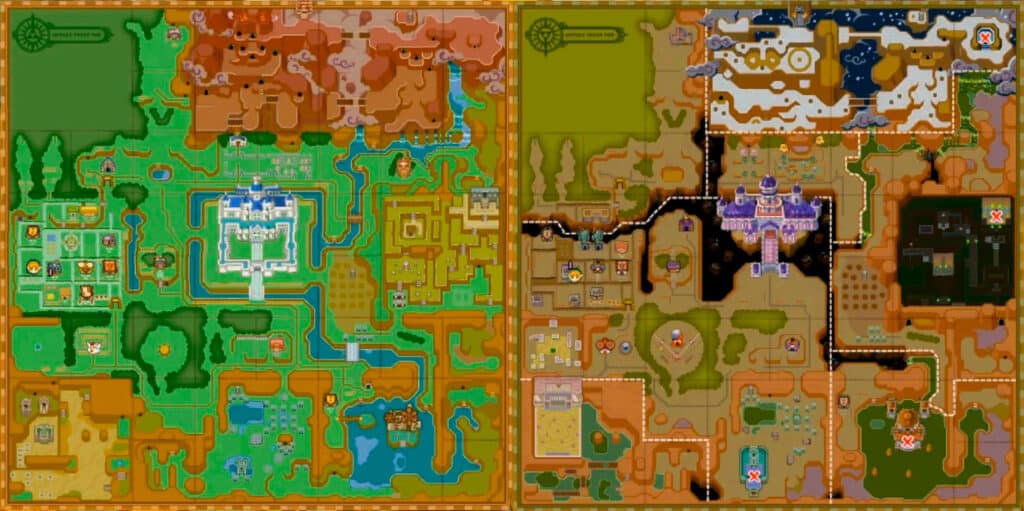
As the spiritual successor to A Link to the Past, it’s natural that A Link Between Worlds continues that game’s tradition of featuring two conflicting worlds. Instead of the Light World and Dark World, A Link Between Worlds features Hyrule and the alternate, twisted realm of Lorule. Both of these maps are heavily reminiscent of the Light and Dark World maps from A Link to the Past while also playing with expectation in clever and rewarding fashion. Like most other versions of the setting of Hyrule, the castle sits at the center of the map along with a village immediately to the west and Death Mountain due north.
The Legend of Zelda: Breath of the Wild (2017)
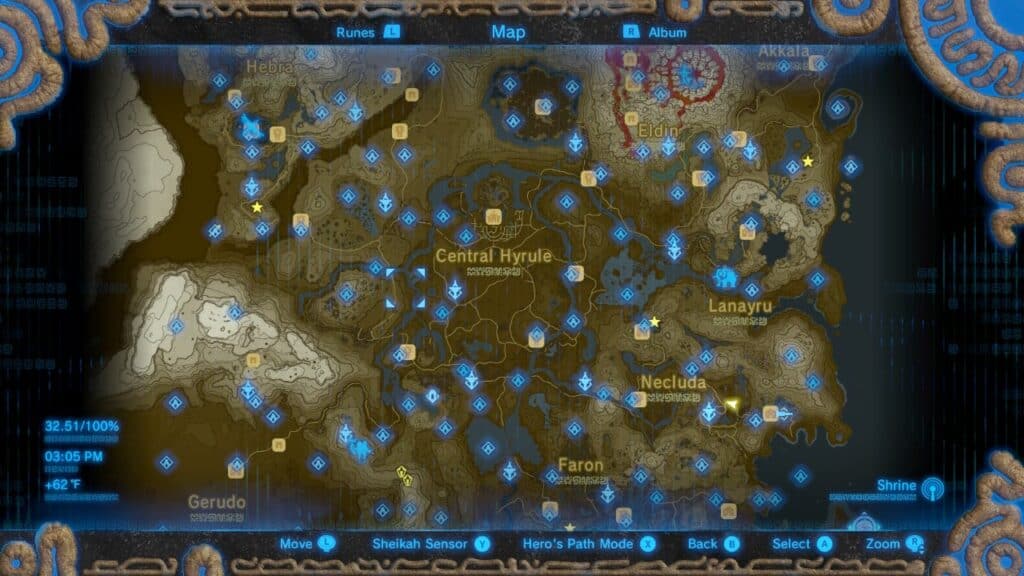
As the first open-world version of the traditional setting of Hyrule, Breath of the Wild‘s version of the kingdom pulls out all the stops to be not only one of the best versions of Hyrule but also one of the best open worlds in gaming. Players gradually uncover pieces of the map as they visit towers and chart what they’re able to scan, and the sheer size and scale of the map completely dwarf any of the previous games in the series. Like other Zelda titles, Hyrule Castle and Hyrule Field sit at the center of the map, with plenty of biome diversity in the surrounding areas. Each of the different areas feature its own landforms and enemy types, as well as flora and fauna for Link to scavenge.
The Legend of Zelda: Tears of the Kingdom (2023)
Sky Isles
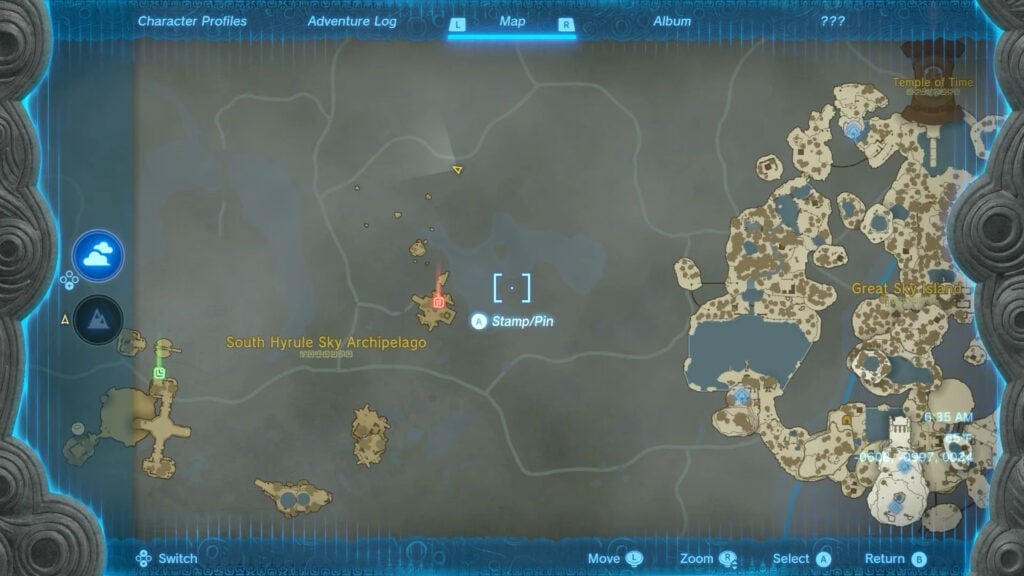
Hyrule
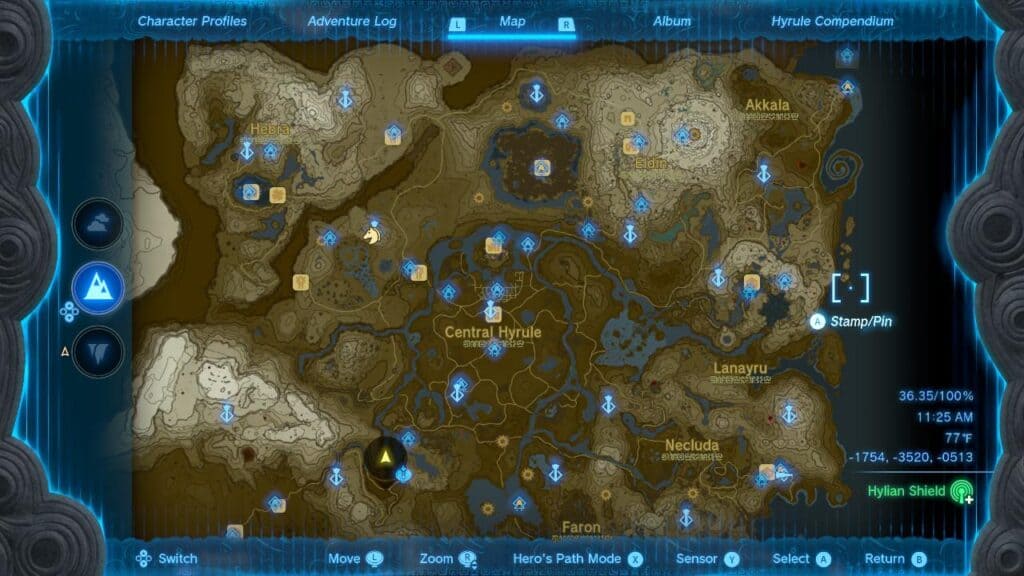
The Depths
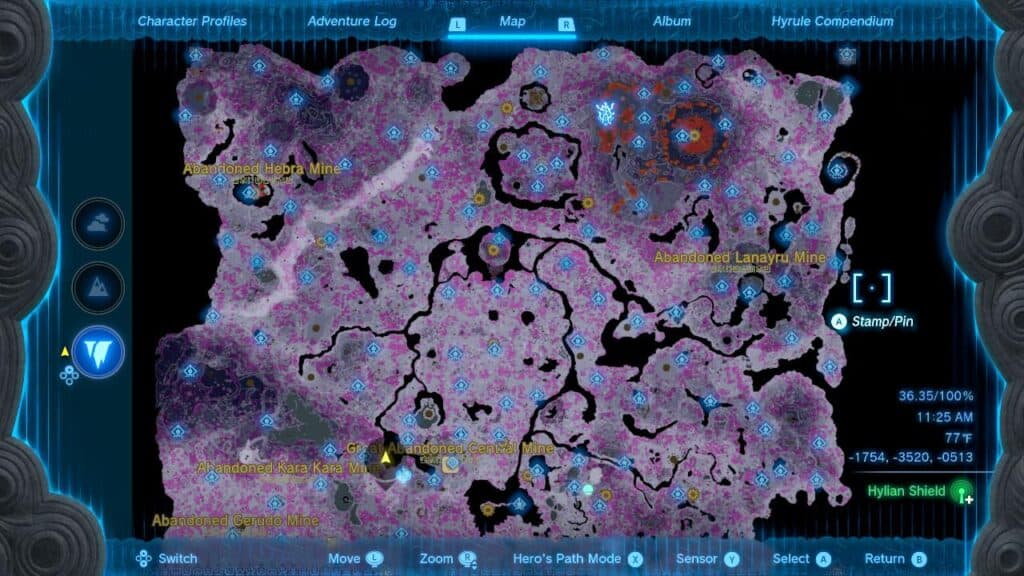
Not content to rest on its laurels as one of the best open worlds in gaming, Breath of the Wild‘s sequel chooses to completely flip the script on what most players likely expected. Tears of the Kingdom doesn’t just feature a remixed version of the main Hyrule map, it also features a new skybound area in the Sky Isles and, in a first for the series, a full underground area the game calls The Depths. Each of these areas feature their own enemies, equipment, vegetation, and mechanics, making visiting and exploring each an integral part of the experience. Breath of the Wild‘s reimagining of Hyrule was already the most impressive in the series, but Tears of the Kingdom‘s three maps top it in every imaginable way.
